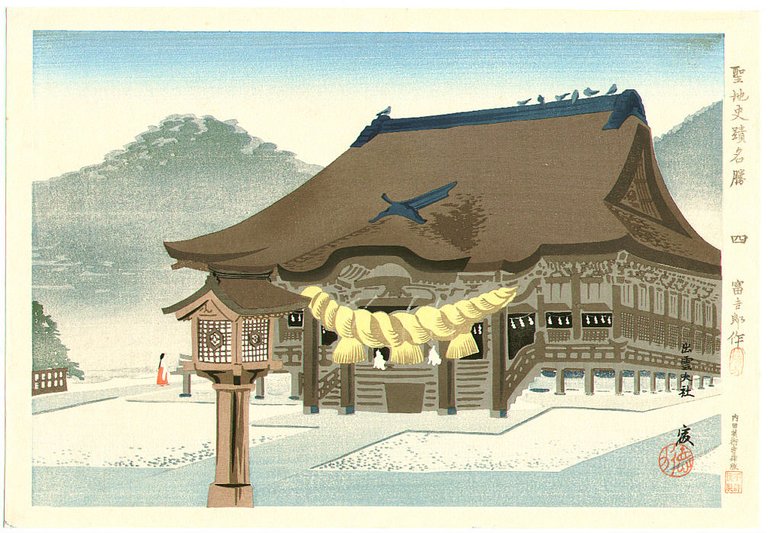October is rapidly approaching. Things are finally starting to get cooler in Japan. Well... at least at night. A little. Or maybe it's just my imagination. This summer has been brutal, so I'm jumping on any hint of autumn I can get!
The modern name for October in Japan is 十月, literally "tenth month". Pretty boring, eh? The older name was more exciting! It comes with a fun story too. Let's look!
The old name for October was was 神無月 (Kannazuki), "the month without gods". This name raises a few questions. Why is the month without gods? Where did they go? What did the gods ever do for us anyway and why should we care if they go away?
There is an old legend that tells us all the Shinto gods in Japan have left their various shrines around the country and journeyed to Shimane for an annual meeting at Izumo Shrine. Izumo Shrine is believed to be the oldest shrine in Japan. According to myth, it was here that Ningi no Mikoto, grandson of the sun goddess Amaterasu, descended from the heavens. At one time, all of Japan was governed from Izumo. So you can see, it's a pretty important place mythologically speaking, and a perfect place for the gods to meet.

Izumo Shrine by Tokuriki Tomikichiro
This meeting leaves the rest of the country momentarily godless, hence the name "the month without gods". But interestingly, in Izumo the month had a different name. In this place the month was called 神有月 (Kamiarizuki), "the month with gods".
It is a bit of a silly story, but as with much of mythology, it's fun. People enjoy spreading the story, especially people in Shimane, who really have fun with it all, as you might imagine.

Gathering of gods at the great shrine at Izumo by Utagawa Sadahide
Modern scholarship tells us this story most likely came after the name. In the name 神無月 (Kannazuki), 神 means god or gods, 無 does mean "absent", and 月 means month. Gods absent month would seem to make sense. But these scholars tell us 無 in this word probably was used for sound only, not meaning, and is therefore a possessive particle, making the 神無月 actually god's month (or month of gods to make it sound better). So you see, this line of reasoning says that the entire story of the gods meeting in Izumo and abandoning the rest of the country is based on false etymology and came later.
The scholars who tell us this give a lot of evidence for their beliefs and they are probably right. Their argument makes sense and goes with other words. But.... the story of the gods and an Izumo meeting is more fun, so I don't think it's going to be going away anytime soon.

Many haiku reference this story. Here's one:
禅寺の松の落葉や神無月
zendera ni matsu no ochiba ya kannazuki
the zen temple
pine needles falling
month of no gods
—Boncho
(trans. David LaSpina)
another:
留主のまにあれたる神の落葉哉
rusu no ma ni aretaru kami no ochiba kana
while the god is gone
the shrine is blanketed
with dead leaves
—Bashō
(trans. David LaSpina)
And many many more.

Anyway, there you go. Enjoy the story!
❦
 |
David LaSpina is an American photographer and translator lost in Japan, trying to capture the beauty of this country one photo at a time and searching for the perfect haiku. He blogs here and at laspina.org. Write him on Twitter or Mastodon. |